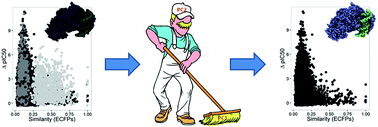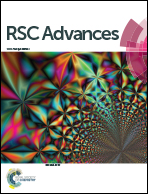Activity landscape sweeping: insights into the mechanism of inhibition and optimization of DNMT1 inhibitors†‡
Abstract
The interest in developing inhibitors of DNA methyltransferases (IDNMT) as modifiers of epigenetic features for the treatment of several chronic diseases is rapidly increasing. Herein, we present insights of a chemoinformatic characterization of IDNMT focused on the analysis of the chemical space and structure–activity relationships (SAR) using activity landscape modeling (ALM). Analysis of the chemical space revealed two main groups of compounds whose chemical structures are associated with either cofactor analogs or non-nucleoside compounds. The ALM showed that non-nucleoside compounds have a continuous SAR while cofactor analogs have a rough SAR with several deep activity cliffs. Molecular modeling helped to explain the structural basis of the activity cliffs. The significance of the results is threefold: (1) the combined analysis of chemical space with activity landscape gave rise to a novel ‘activity landscape sweeping’ strategy that enabled a better structure-based interpretation of the SAR; (2) it is feasible – and advisable – to develop predictive models for non-nucleoside IDNMT studied in this work, and (3) structure-based interpretation of the SAR gave clear insights into the molecular mechanism of inhibition of novel IDNMT suggesting specific strategies to optimize the activity of leads compounds.


 Please wait while we load your content...
Please wait while we load your content...